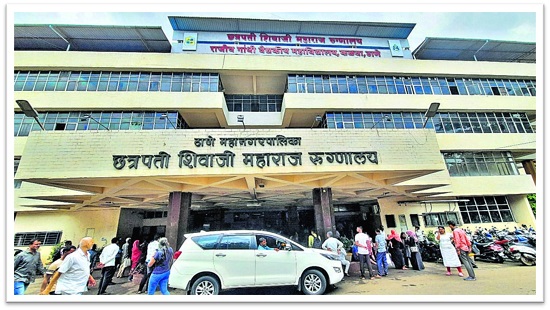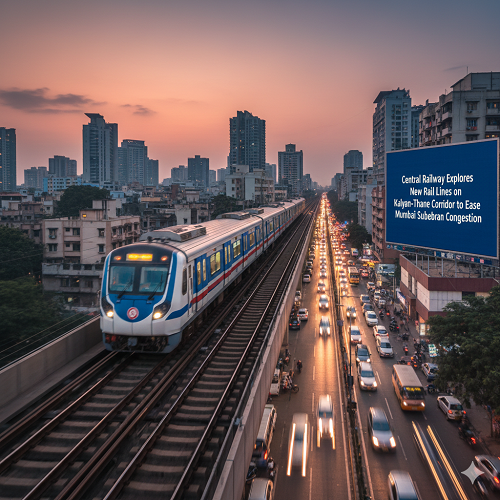
Thane’s Healthcare Push: Expanding Maternity Capacity at CSM Hospital Signals a New Era in Urban Public Health
In a city that rarely pauses, the quiet expansion of a maternity ward may seem like just another bureaucratic update, but Thane Municipal Corporation’s (TMC) decision to increase the maternity capacity at Chhatrapati Shivaji Maharaj (CSM) Hospital from 70 to 90 beds tells a far deeper story, one that reflects the broader pressures and priorities of India’s rapidly urbanizing healthcare system.
The move, announced under the leadership of Municipal Commissioner Saurabh Rao, comes amid a visible surge in deliveries at the civic-run hospital, which caters not only to Thane city but also to neighbouring Thane Rural and Palghar districts. The scale and speed of this decision underline both a mounting demographic demand and the civic body’s attempt to modernize healthcare infrastructure before strain turns into crisis.
Rising Deliveries, Limited Space
According to official data, the obstetrics department at CSM Hospital sees about 200 outpatients every day, a number that has steadily climbed over the past few years. The department conducts an average of 18 deliveries daily, but in October alone, that figure rose to 22. At one point, 98 women were admitted simultaneously, far exceeding the existing capacity of 70 postpartum beds.
This mismatch between patient load and infrastructure capacity has been a persistent issue across India’s Tier-II cities. Urban health systems often lag behind population growth, creating what public policy experts call a “capacity gap.” Thane’s population, now over 1.8 million, is expanding faster than its civic health facilities can adapt. The CSM Hospital’s expansion, therefore, is less of an isolated administrative step and more of an urgent response to systemic stress.
A Data-Driven Expansion
Commissioner Saurabh Rao’s directive to modernize the maternity ward at Swatantra Sainik Hakim Ajmal Khan Hospital in Mumbra, as an extended center of CSM Hospital, adds another layer of pragmatism to the initiative. The plan aims not only to decongest CSM but also to distribute the patient load geographically, making maternal healthcare more accessible to residents in suburban and peri-urban pockets.
Modernization in this context does not merely imply adding beds. It involves upgrading facilities, enhancing diagnostic capacity, ensuring better neonatal care, and aligning staffing ratios with World Health Organization (WHO) norms. Currently, India faces a shortage of nearly 79,000 obstetricians and gynaecologists, according to the Union Health Ministry. Addressing infrastructure without matching manpower would risk creating “empty capacity,” infrastructure without adequate personnel to deliver quality care.
Lessons from a Growing Urban Burden
Thane’s situation mirrors what is happening across India’s expanding cities. Between 2011 and 2021, India’s urban population grew by nearly 36%, but civic healthcare infrastructure has not kept pace. Municipal hospitals, once designed to serve modest populations, now cater to multi-district inflows, functioning simultaneously as local, regional, and referral centers.
What makes Thane’s case particularly illustrative is its geographical and economic diversity. It sits at the intersection of rapid industrialization, informal labor migration, and urban sprawl. This combination fuels high birth rates and unpredictable health service demand. The CSM Hospital’s maternity ward is thus not just a clinical facility but also a social equalizer, serving daily-wage workers, low-income mothers, and residents who depend entirely on public healthcare.
Policy and the People: Balancing Equity and Efficiency
The TMC’s decision also reveals a crucial shift in local governance, moving from reactive healthcare provisioning toward proactive planning. Commissioner Rao’s directive for a comprehensive modernization plan at Ajmal Khan Hospital suggests a more integrated vision of urban healthcare, where satellite centers and core hospitals function as a coordinated network rather than isolated entities.
Such decentralization is essential in a dense urban cluster like Thane, where commuting even 10 kilometers can mean hours lost in traffic. By converting the Mumbra hospital into an extended center, the civic body effectively shortens the distance between patients and critical care, a small but meaningful reform in service delivery.
The Economics of Public Health Investment
From an economic standpoint, investments in maternity infrastructure carry outsized returns. The World Bank estimates that every dollar spent on maternal and child health yields up to $9 in social and economic benefits. Healthier mothers translate to lower infant mortality, reduced healthcare costs in the long term, and a more productive workforce.
For a city like Thane, whose per capita income is among the highest in Maharashtra, the challenge is not funding but prioritization. Civic spending on health often competes with infrastructure, water, and housing needs. Yet, the pandemic has recalibrated these priorities, reminding urban planners that health is not a sectoral issue but an enabler of economic resilience.
Sustaining Momentum Through Smart Implementation
The next phase of this transformation will depend on execution. Expanding capacity is the easy part, maintaining quality is harder. Training, equipment maintenance, patient feedback systems, and digital record integration must follow. Thane’s initiative will be truly successful only if it evolves into a sustainable model, one that other municipal corporations across India can emulate.
In the long view, CSM Hospital’s expanded maternity ward represents more than an addition of 20 beds. It’s a microcosm of India’s healthcare journey, from scarcity toward sufficiency, from episodic fixes toward systemic reform. As cities like Thane grow and diversify, their civic bodies will increasingly find themselves at the frontlines of public health delivery. The challenge now is not simply to build more hospitals, but to build smarter, more inclusive systems that keep pace with the people they serve.




